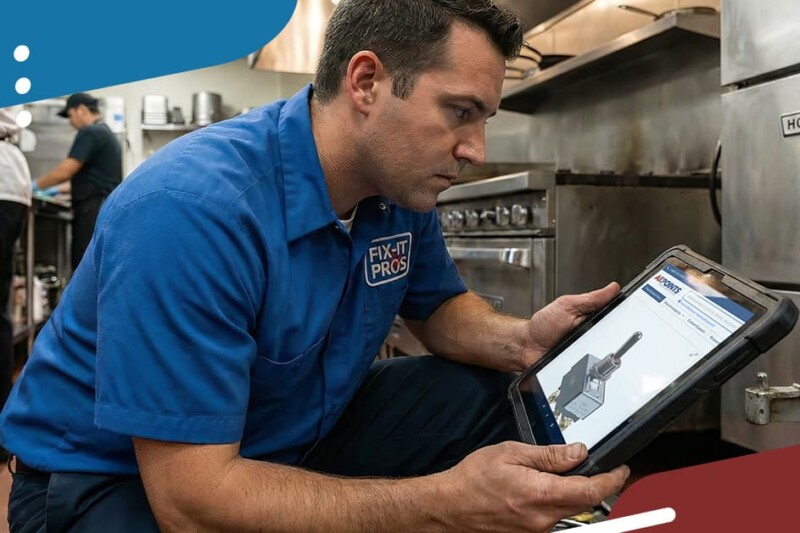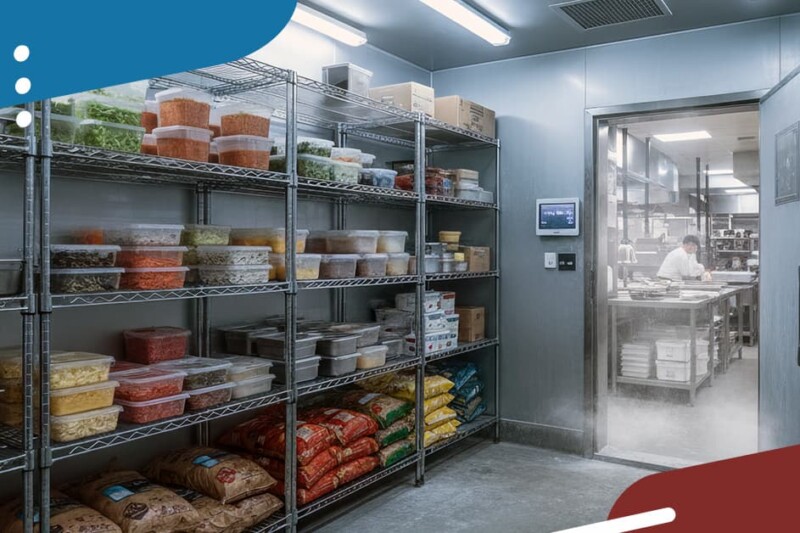A Chill Wind: Latest Refrigeration Regulations
Certain refrigerants and foaming agents not only deplete the stratospheric ozone layer—allowing harmful ultraviolet B sun rays to reach the earth and harm living things—but also exacerbate global warming. Now, with the latest rules under its Significant New Alternatives Policy (SNAP), the Environmental Protection Agency (EPA), headquartered in Washington, D.C., is restricting a number of ozone-depleting, high-warming-potential refrigerants and foaming agents used in commercial refrigeration.
When the EPA proposed the new rules last spring, industry suppliers expressed support for the goal but objected to tight deadlines. They also pointed out that the SNAP rules are sometimes at cross-purposes with the Washington, D.C.-based Department of Energy (DOE) regulations affecting commercial refrigeration, since some refrigerants set to be banned by the EPA boost energy efficiency. The North American Association of Food Equipment Manufacturers’ (NAFEM) legal counsel appeared before the 7th Circuit U.S. Court of Appeals in October to argue that the DOE’s energy-conservation standards for commercial refrigeration should be vacated, in part because of inconsistencies with the EPA SNAP standards. The commercial refrigeration industry is hoping for a court decision by early 2016.
The two agencies—DOE and EPA—don’t seem to the industry to make enough effort to work together, says Charlie Souhrada, Director of Member Services for Chicago-based NAFEM. “To some degree the attitude toward manufacturers has been, ‘You figure it out.’”
And figure it out they must, since the latest SNAP rules were finalized in July with only minor modifications. Here are the essentials of what end users need to know.
What equipment will be affected, and when?
“The EPA provided manufacturers with SNAP alternatives that are both naturals and low-global-warming-potential HFCs,” says Ronald Shebik, Principal Engineer, Global Product Compliance at Hussmann Corp., Bridgeton, Mo. “EPA does not endorse any one refrigerant alternative, and looks at sectors and the alternatives available for each sector.”
The first deadlines, coming in July 2016, cover retrofits of supermarket systems, remote condensing units and standalone retail food refrigeration units (back-of-house refrigerators and freezers and front-of-house reach-ins at restaurants, noncommercial foodservice locations and c-stores) that are ready to use as soon as they’re plugged in.
Newly manufactured supermarket systems must meet the updated requirements in January 2017; new remote condensing units at the beginning of 2018; smaller standalone units (medium-temperature units with compressors below 2,200 Btu/hr. and no flooded evaporator, only direct expansion or DX) in the first month of 2019. By January 2020, the new rules will apply to other medium-temperature units (those with a compressor above 2,200 Btu/hr. and/or with a flooded evaporator) as well as low-temperature units.
Except for those connected to a supermarket rack-refrigeration system, ice machines are not covered under the latest SNAP rules, but they likely be addressed under “SNAP 2” regulations expected from the EPA early next year, Souhrada says.
What do these dates actually mean for operators?
For new refrigeration units, “the EPA regulations are customer-based,” Shebik says. “The compliance dates are equipment commissioning dates, or as EPA says, ‘When you turn it on’—whereas DOE impacts the date the equipment leaves the manufacturer.”
The EPA says existing systems may continue to be serviced and maintained for their useful life using the original refrigerant. But it’s a little more complicated than that. Mary Dane, Agency Approval Engineer at ITW-Refrigeration, Traulsen/ITW FEG, Ft. Worth, Texas, says the EPA has its own definitions of what constitutes a “repair” of refrigeration equipment and what’s a “retrofit.” She adds, “As long as owners meet the definition of ‘repair,’ they can use their current products—even replace parts of the system, like individual cases.”
NAFEM’s Souhrada likens the transition to that experienced a few years ago by owners of air-conditioned cars: “You can continue to use a refrigerant as long as there is a supply in your existing piece of equipment.” But a leak or breakdown means swapping it out for new equipment and a different refrigerant.
You say this is a final rule. What’s still up in the air?
The EPA cautions that since some of the approved refrigeration alternatives include ethane, isobutene and propane, they must be carefully studied to ensure their safety in foodservice equipment.
Many manufacturers have asked for narrow-use exemptions for refrigeration categories that still do not have a refrigeration option that’s really a good fi t, so there’s a good deal still under discussion.
What else is coming down the pipeline?
There’s a pending proposal, now being circulated for user comment, to more fully implement section 608 of the Clean Air Act by updating requirements for ozone-depleting refrigerants and extending requirements to non-ozone depleting substitutes such as hydrofluorocarbons (HFCs). (Some substitutes have already been exempted from the section 608 venting prohibition in previous EPA rules and would also be exempted from the requirements under this proposed rule.) The section 608 changes would track and place limits on leaky remote systems, Dane says.
Will the latest EPA SNAP rules make refrigeration more costly for operators?
“That’s to be determined,” Souhrada says. “There are so many unknowns that at this point, nobody can say for sure.”
End users may have to absorb conversion costs for new equipment. With limited availability of older components, operators’ repair costs might also increase.
How should end users prepare for SNAP-mandated changes in refrigeration units and refrigerants?
These issues are highly technical, and the solution that results in the highest efficiency at lowest cost differs from one operation to the next. The likelihood of further EPA and DOE regulations down the road means that replacing equipment now may or may not be in your best interest. Don’t try to figure this out on your own; consult with both your refrigeration supplier and your refrigerant servicer.
Phasing Out
The NAFEM EPA SNAP Issue Brief’s list of refrigerants no longer allowed for each type of system.
Under the Final Rule, read into the Federal Register July 20, 2015, specific refrigerants and foam-blowing agents will no longer be acceptable in a number of retail food refrigeration categories as follows:
• Retrofitted supermarket systems: R– 404A, R–407B, R–421B, R–422A, R– 422C, R–422D, R–428A, R–434A, and R–507A as of July 20, 2016
• Retrofitted remote condensing units: R–404A, R–407B, R–421B, R–422A, R–422C, R–422D, R–428A, R–434A, and R–507A as of July 20, 2016
• Retrofitted stand-alone retail food refrigeration equipment: R–404A and R– 507A as of July 20, 2016
• New supermarket systems: HFC– 227ea, R–404A, R–407B, R–421B, R–422A, R–422C, R–422D, R–428A, R–434A, and R–507A as of January 1, 2017
• New remote condensing units: HFC–227ea, R–404A, R–407B, R–421B, R–422A, R–422C, R–422D, R–428A, R–434A, and R–507A as of January 1, 2018
• New stand-alone medium-temperature units with a compressor capacity below 2,200 Btu/hr. and not containing a flooded evaporator: FOR12A, FOR12B, HFC–134a, HFC– 227ea, KDD6, R–125/290/134a/600a (55.0/1.0/42.5/1.5), R–404A, R–407A, R–407B, R–407C, R–407F, R–410A, R– 410B, R–417A, R–421A, R–421B, R– 422A, R–422B, R–422C, R–422D, R– 424A, R–426A, R–428A, R–434A, R– 437A, R–438A, R–507A, RS–24 (2002 formulation), RS–44 (2003 formulation), SP34E, and THR–03 as of January 1, 2019
• New stand-alone medium-temperature units with a compressor capacity equal to or greater than 2,200 Btu/hr. and stand-alone medium-temperature units containing a flooded evaporator: FOR12A, FOR12B, HFC–134a, HFC–227ea, KDD6, R–125/290/134a/600a (55.0/1.0/42.5/1.5), R–404A, R–407A, R–407B, R–407C, R–407F, R–410A, R–410B, R–417A, R–421A, R–421B, R–422A, R–422B, R–422C, R– 422D, R–424A, R–426A, R–428A, R– 434A, R–437A, R–438A, R–507A, RS–24 (2002 formulation), RS–44 (2003 formulation), SP34E, and THR–03 as of January 1, 2020
• New stand-alone low-temperature units: HFC–227ea, KDD6, R–125/290/134a/600a (55.0/1.0/42.5/1.5), R–404A, R–407A, R–407B, R–407C, R–407F, R–410A, R–410B, R–417A, R–421A, R–421B, R–422A, R–422B, R–422C, R– 422D, R–424A, R–428A, R–434A, R– 437A, R–438A, R–507A, and RS–44 (2003 formulation) as of January 1, 2020
RELATED CONTENT
- Advertisement -
- Advertisement -
- Advertisement -
TRENDING NOW
- Advertisement -
- Advertisement -
- Advertisement -


